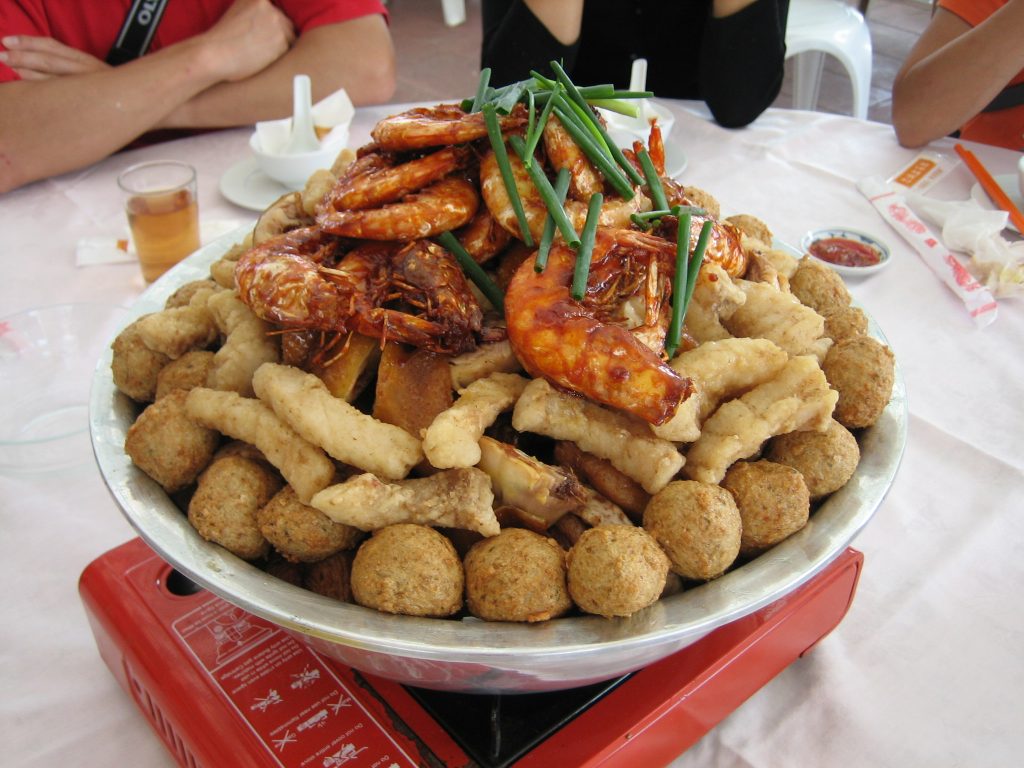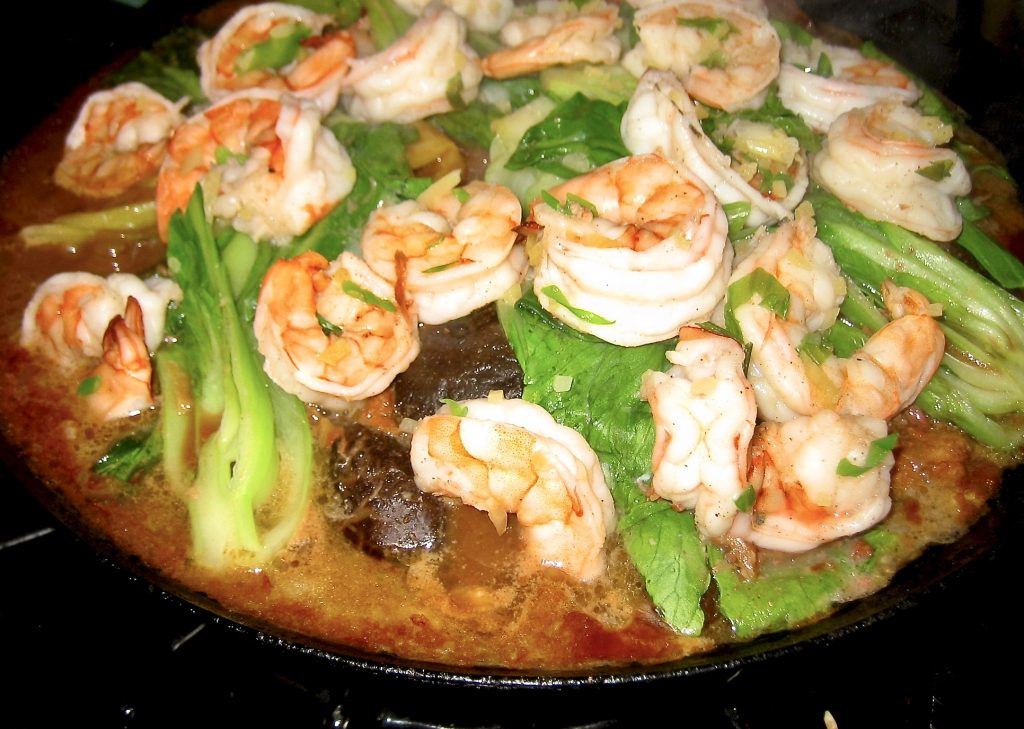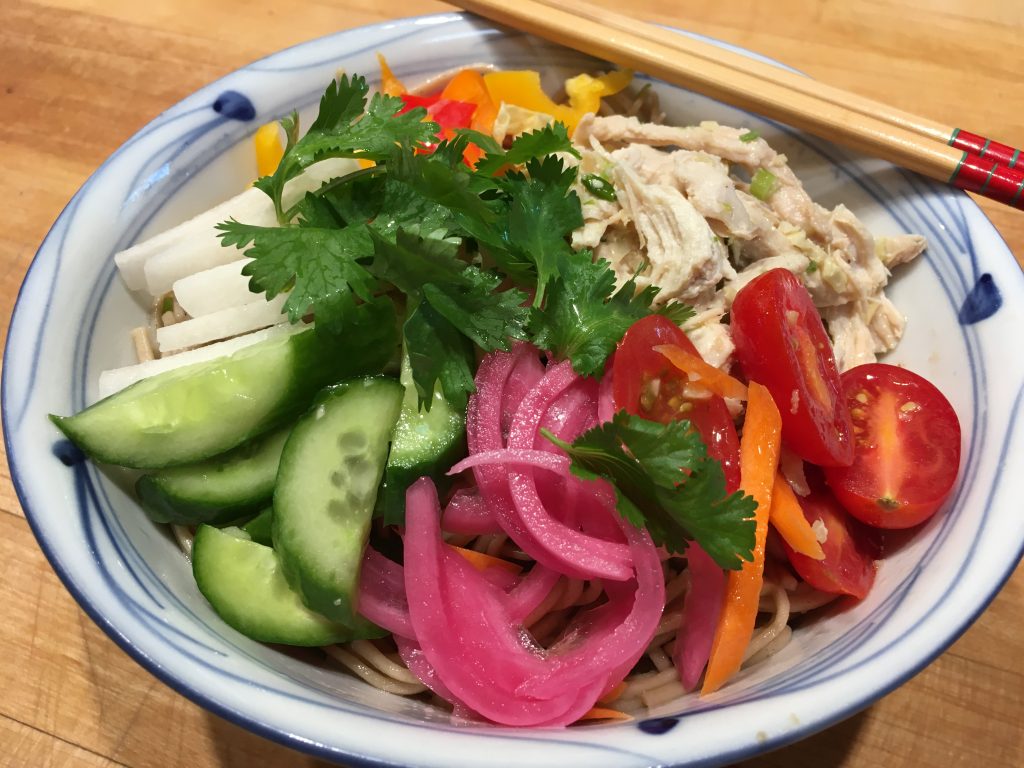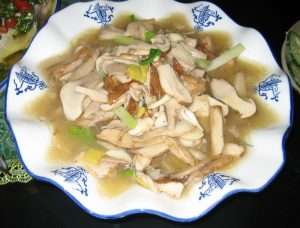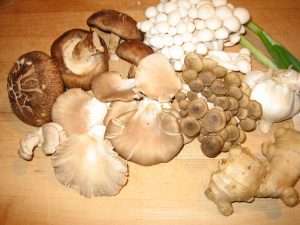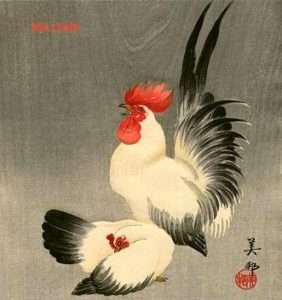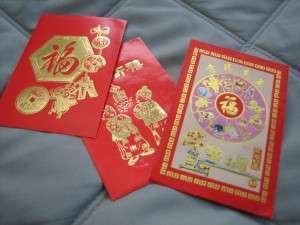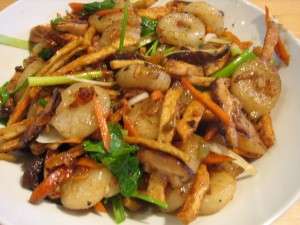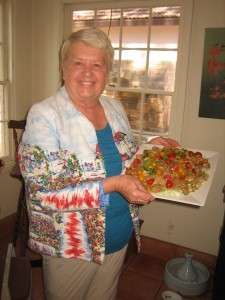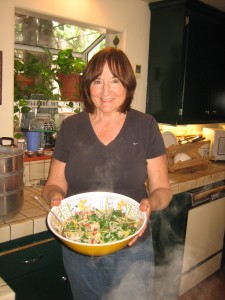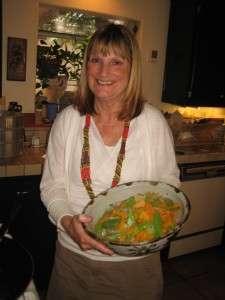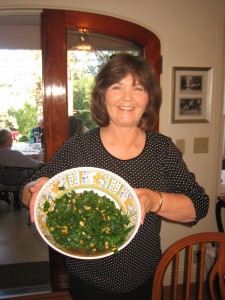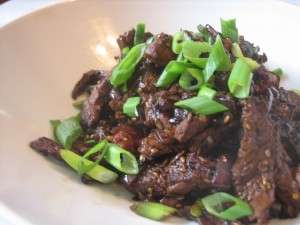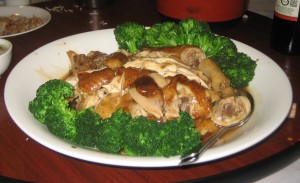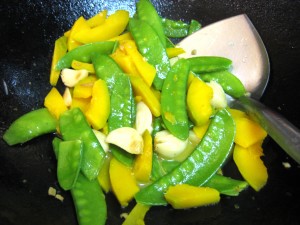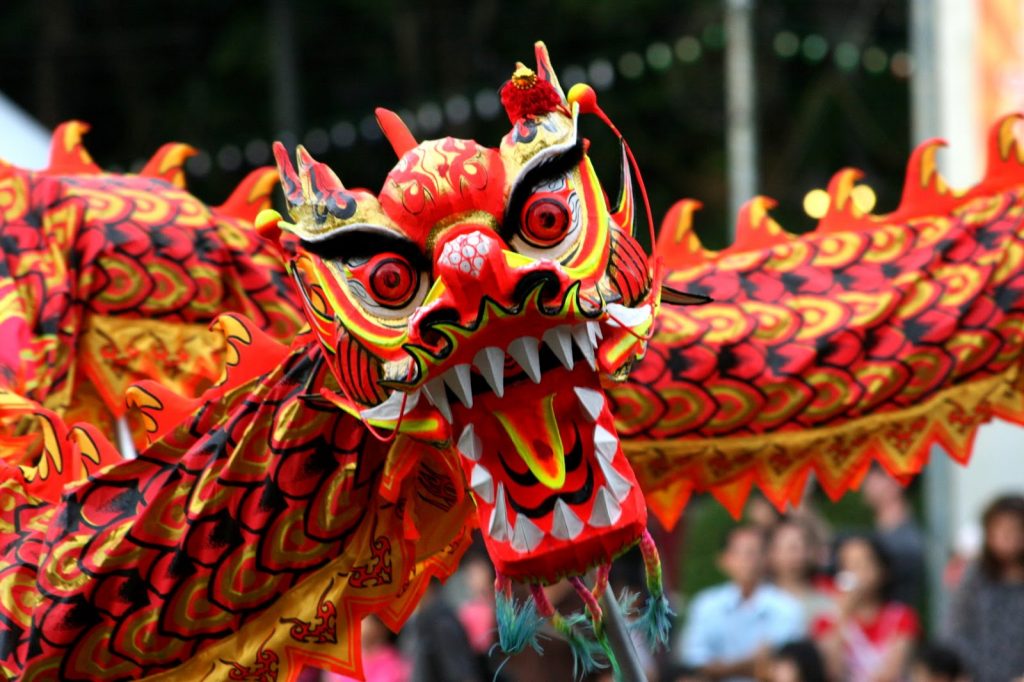
Happy Chinese New Year! Khiung Hee Fat Choy! In 2024, the Year of the Dragon begins on February 10. Welcome in the lunar new year with a family feast.
Chinese New Year is a time of renewal, a time for fresh starts. To ensure a promising outcome, feature symbolic foods with auspicious messages such as wealth, longevity, luck, and prosperity on your holiday table. Add family favorites to supplement your feast.
I like to involve everyone in the menu planning and preparation. It’s a big meal for one person to cook. So I invite people to contribute a favorite dish. I often look at The Hakka Cookbook for ideas. I may make the Hakka Egg Roll (page 170) which sort of resemble gold bars.
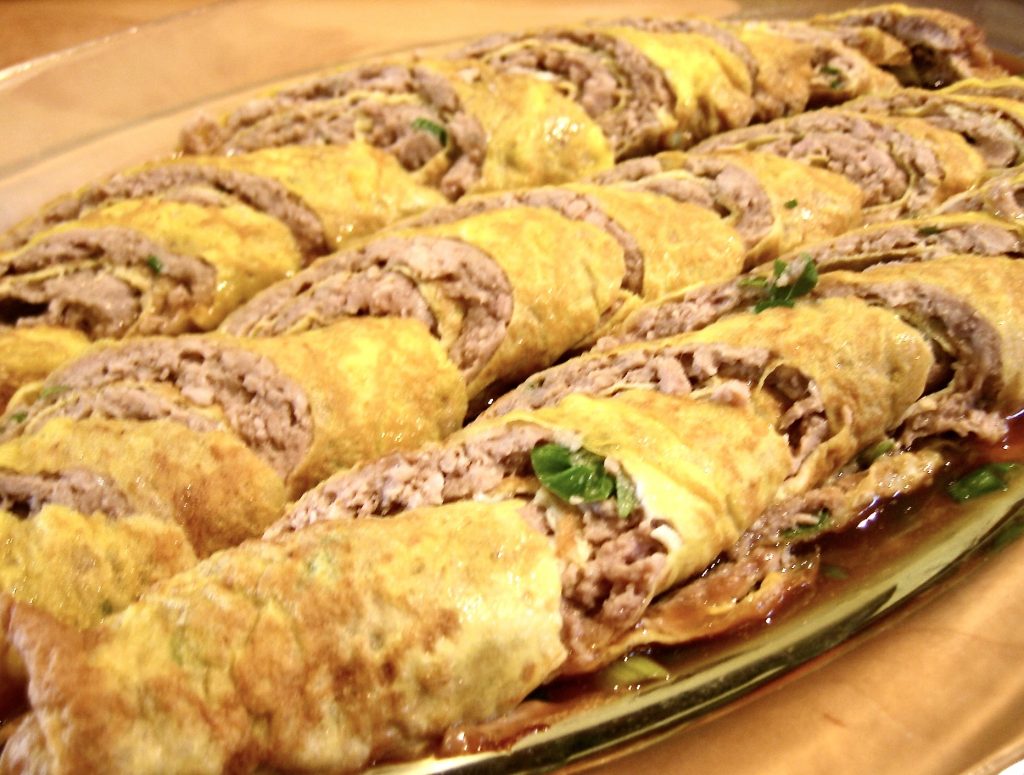
Someone will bring noodles for long life. Perhaps the Garlic Noodles with Shrimp (page 193) which is similar to lo mein or chow mein. Or the dark Sweet Soy Chow Mein (page 178). Another option might be the savory Noodles with Mushroom Pork Sauce (page 104).
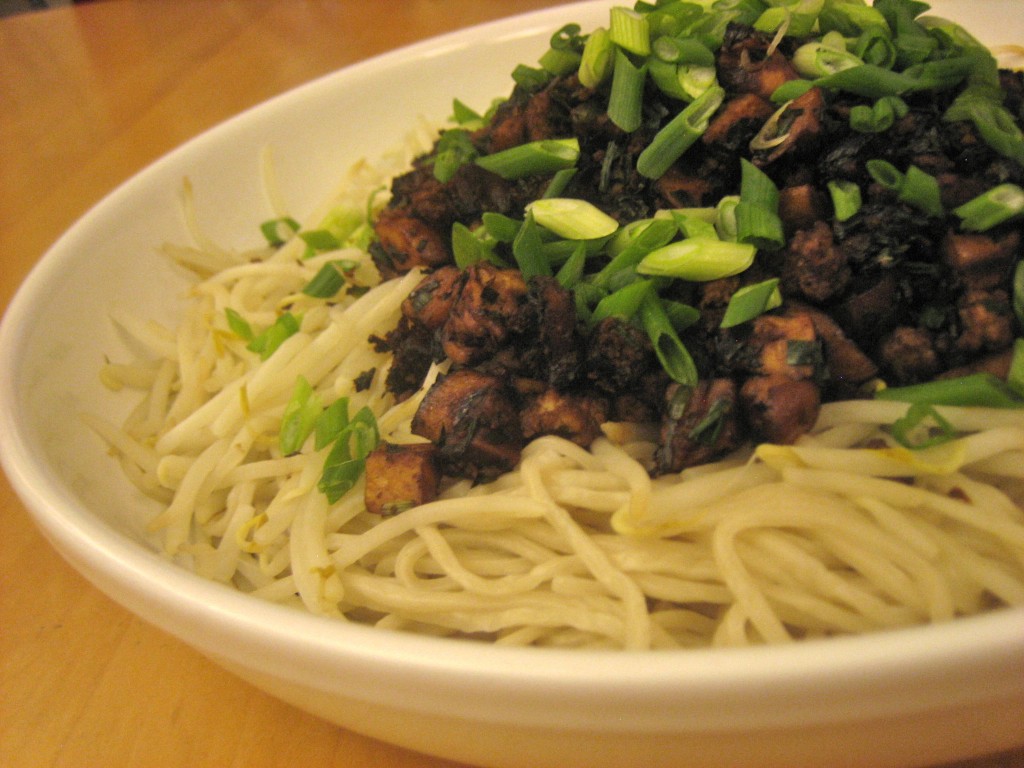
Green symbolizes growth in business. Perhaps the simple Chinese Broccoli in Sweet Rice Wine (page 230), Stir-Fried Chinese Lettuce and Wine Rice (page 50), or Stir-Fried Water Spinach and Charred Red Chiles (page 71). A colorful combo would be the Ginger-Scented Squash, Peas, and Lily Bulbs (page 52). Perhaps the green pea pods might symbolize the growth of green dollars and the squash could represent gold coins.
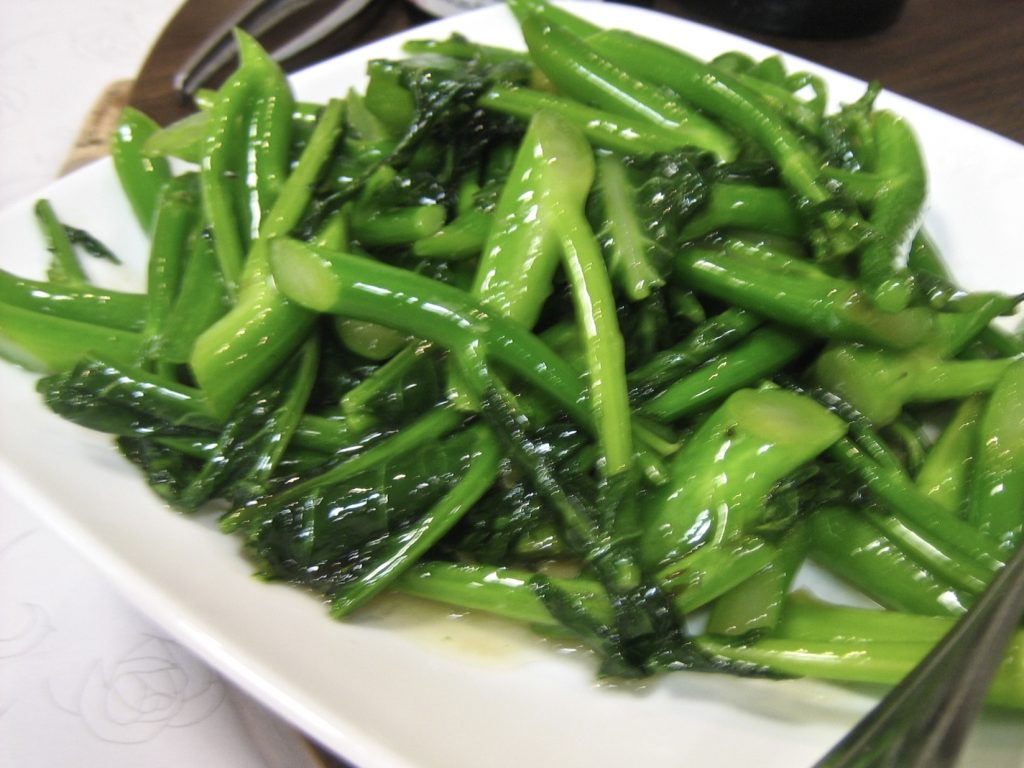
Fish brings abundance to the new year. We often cook Steamed Fish with Green Onions (page 39). Although the Braised Fish in Black Bean Sauce (page 137) might be a delicious alternative this year.
We often supplement with a Chinese roast duck. Or we may make the Hakka Salt-Baked Chicken (page 64) or the simpler Salt-Poached Chicken (page 226).
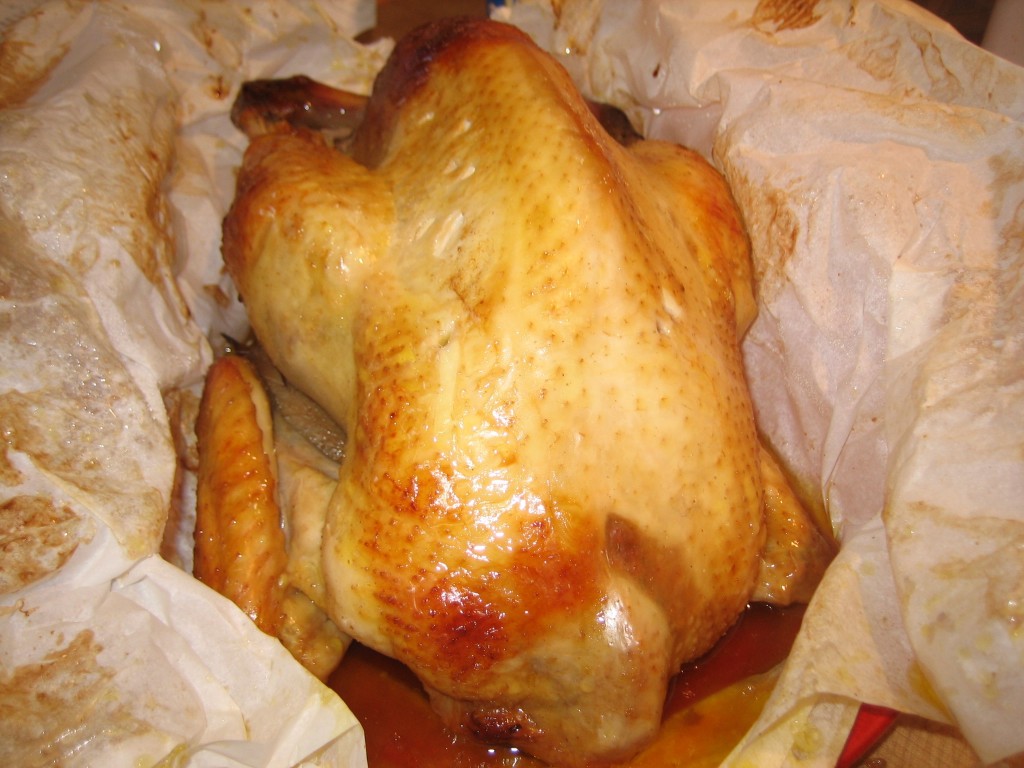
May your year be filled with joy, prosperity, and peace. Happy New Year! ! Khiung Hee Fat Choy!

